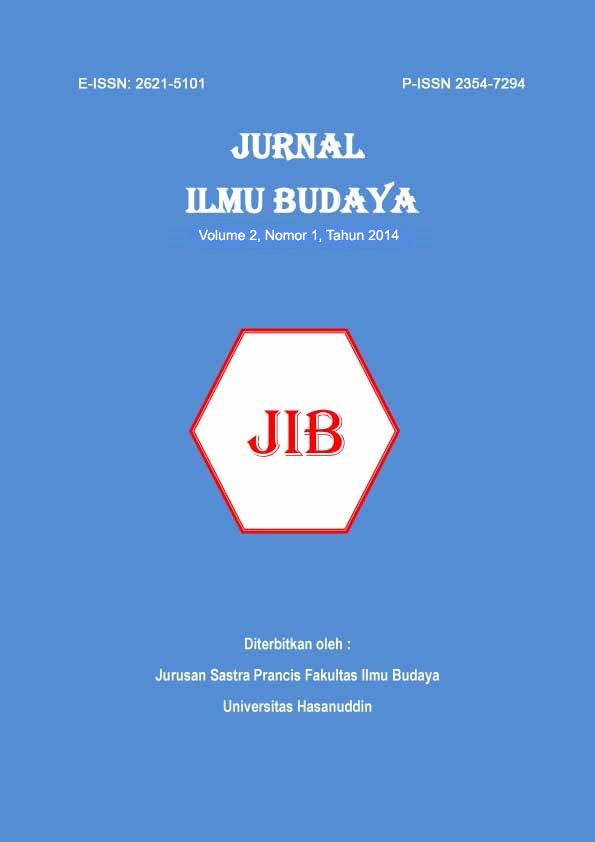THE TEACHING OF LANGUAGE
DOI:
https://doi.org/10.34050/jib.v2i1.2396Abstract
In general, language teaching shifted from old method to modern one. The old method tended toplace more emphasis on the mastery of the rules of language or grammar rather than to thefunction of language as the primary means of communication for mankind. The implications ofthe method and / or the old approach was the birth of a second language learner or a foreignlanguage that is very capable in using the rules of the language but lacking even incompetent interms of communicating using the language. This reality motivated language teaching experts toswitch to a more functional approach thus was born the so-called communicative approach, theapproach in language teaching that requires students to use the language to the maximum duringthe learning process, although the rules of the language tend to 'negligible'. Real form of thecommunicative approach is the interaction established during the learning process by using thelanguage being studied. The interaction was not only between teachers and students (two waycommunication) but also between teachers and students and among students (multi-directional).Only the implementation of this approach is not without drawbacks, namely the birth of languagelearners who are able to communicate verbally very eloquent invitation but is hampered whendealing with tasks that require them created especially writing scholarly writings.Both of the above realities spawned the emergence approach called integrated approach, namelythe teaching of grammar rules of a language by using the language communicatively - interactiveduring the learning process. Although this approach is also not free from the possibility of thebirth of various constraints, such as the design of instructional materials that require specialexpertise and impeccable, setting and classroom management is also one of the considerationsthat can not be ruled out.Key words: Teaching English, communicative interactions.Downloads
References
REFERENCES
Amin, Radhiah Mardhiah. 2005. The Preferred Combination of Classroom Interactions Patterns
in English Language Teaching by the English Education Students of FPBS UNM.
Graduate Program , State University of Makassar.
Anderson, Lorin W. & Burns, Robert B. 1989. Research in Classrooms: The Study of Teachers,
Teaching,and Instruction. Oxford: Pergamon Press.
Brown, Douglas H. 2001. Teaching by Principles: an Interactive Approach to Language
Pedagogy. New York: Longman.
Candlin, Christopher N. (ed.). 1983. The Communicative Teaching of English; Principles and
Exercise Typology. Essex: Longman.
Fries, Charles C. 1945. Teaching and Learning English as a Foreign Language. Ann Arbor:
University of Michigan Press.
Hamacheck. 2010. Jurnal: Al Adabi. Ilmu Bahasa dan Kesusastraan; Vol V Edisi ke 3 Nopember.
Bahasa dan Kebudayaan.
Krashen, Steven D. 1983. Principles and Practice in Second Language Acquisition. London:
Prentice Hall International English Language Teaching.
Lado, Robert. 1988. Teaching English Across Cultures: an Introduction for Teachers of English
to S peakers of Other Languages. New York: McGraw-Hill.
Long, Michael., and Richards, Jack C. 1988. Methodology in TESOL: a Book of Reading.
Newbury House, New York.
Mc. Combs, Barbara L & Jo Sue Whisler. 1997. The Learner-Centered Classroom and School.
Jossey-Blass Publishers. San Fransisco.
Macken, Horaric, et al. 2011. Australian Jurnal of Language and Literacy Vol.34 No.1; A
Gramatic „Good Enough‟ for School English in the 21st Century: Four Challenges in
Realising the Potential
Manurung, Konder. 2006. Budaya Belajar Mandiri dan Pembelajaran Bahasa Inggris. Linguistik
Indonesia 24/2, 193-200.
Noni, Nurdin. 2004. A Hybrid of Face to Face Teaching and Computer Assisted Language
Learning (CALL) to Improve Students‟ English Achievements Based on Individual
Learning Differences. (Unpublished Disertation). Post Graduate Studies Programme.
Hasanuddin University.
Palmer, F. R. 1976. Semantics: A new outline. Cambridge: Cambridge University Press
Rasyid, Muhammad Amin. 1992. Developing Communicative Competence Through Topic of
Interest and Learning Styles Using the Integrated Skills Approach. (Unpublished
Disertation). Pascasarjana UNHAS.
Sturm, Heike & Franz X. Bogner. 2008. International Journal of Science Education, Vol. 30
no.7; Student Oriented Versus Teacher Centred: The Effect of Learning at Work stations
About Birds and Bird Flight on Cognitive Achievement and Motivation.
Wehantouw, O.J. 1988. The Native Language in The Teaching of English as a Foreign
Language. Badan Penerbit IKIP Ujung Pandang.
Wright, Andrew. 1990. Pictures for Language Learning. Cambridge: Cambridge University
Press
Wright, Tony. (1988). Roles of Teachers and Learners. In C N Candlin and H G Widdowson,
Language Teaching: A Scheme for Teacher Education. Oxford: Oxford University Press.
Vygotsky, Lev. 1978. Thought and Language. Cambridge: The MIT Press.
Downloads
Published
Issue
Section
License
Copyright (c) 2014 JURNAL ILMU BUDAYA

This work is licensed under a Creative Commons Attribution-NonCommercial 4.0 International License.







